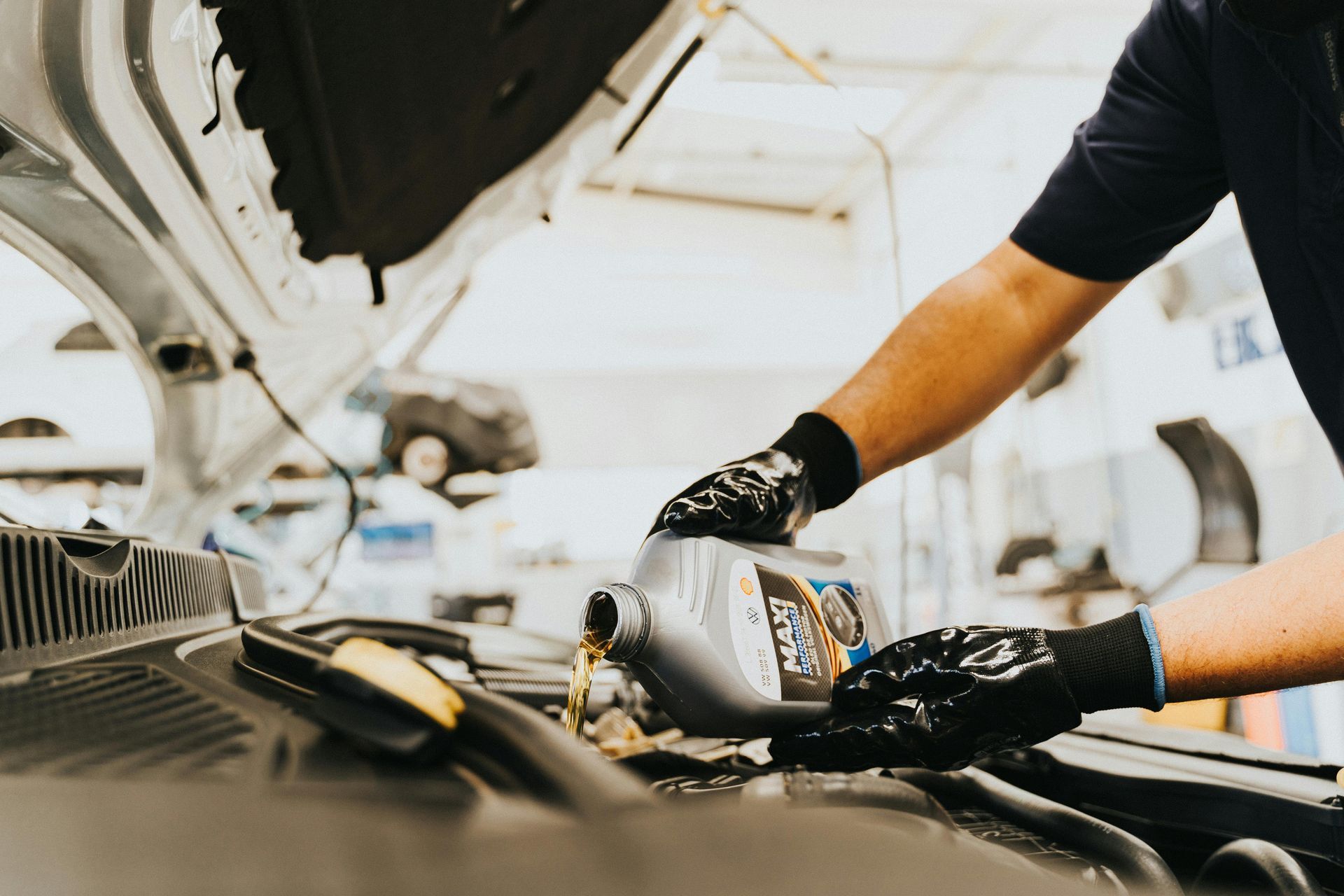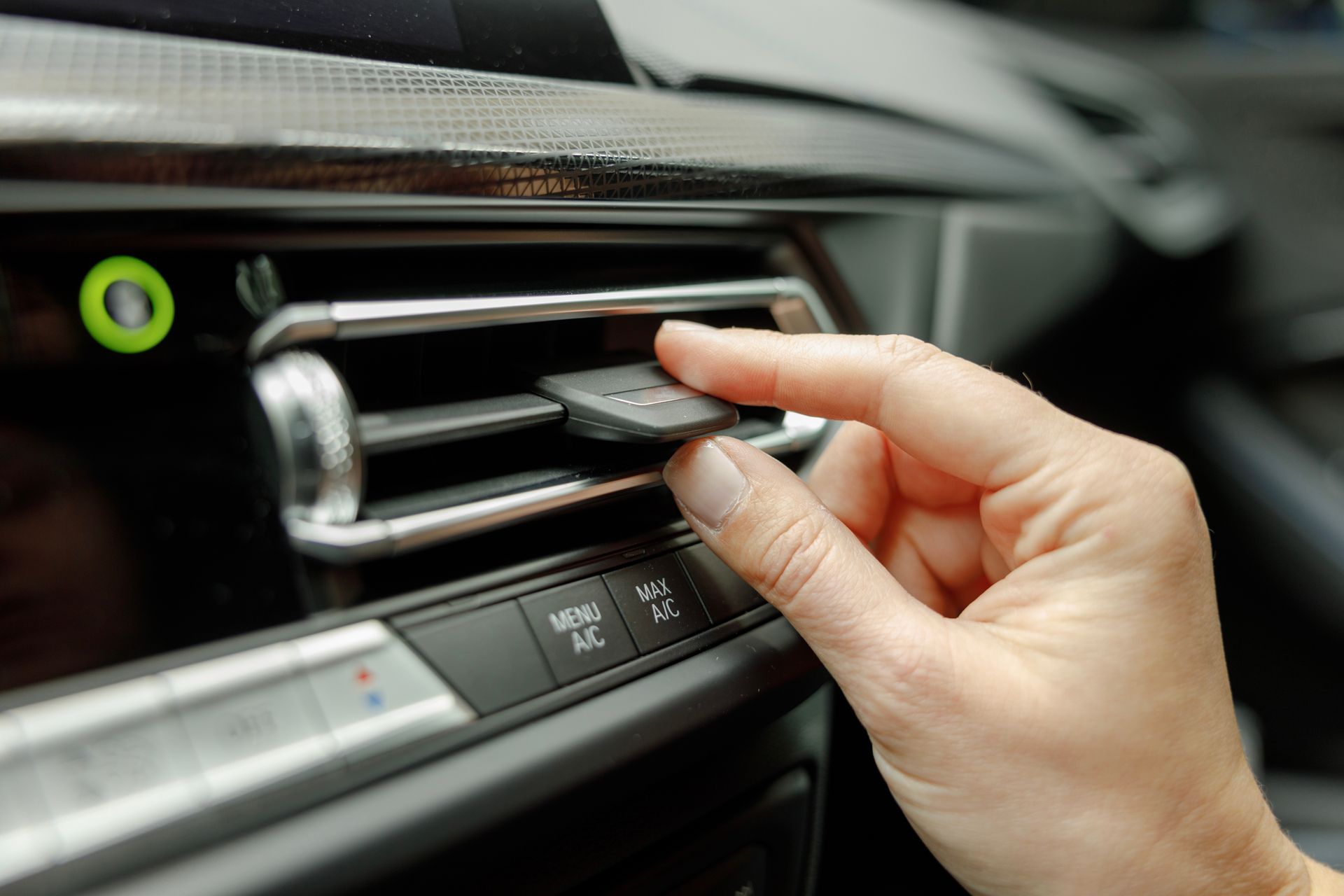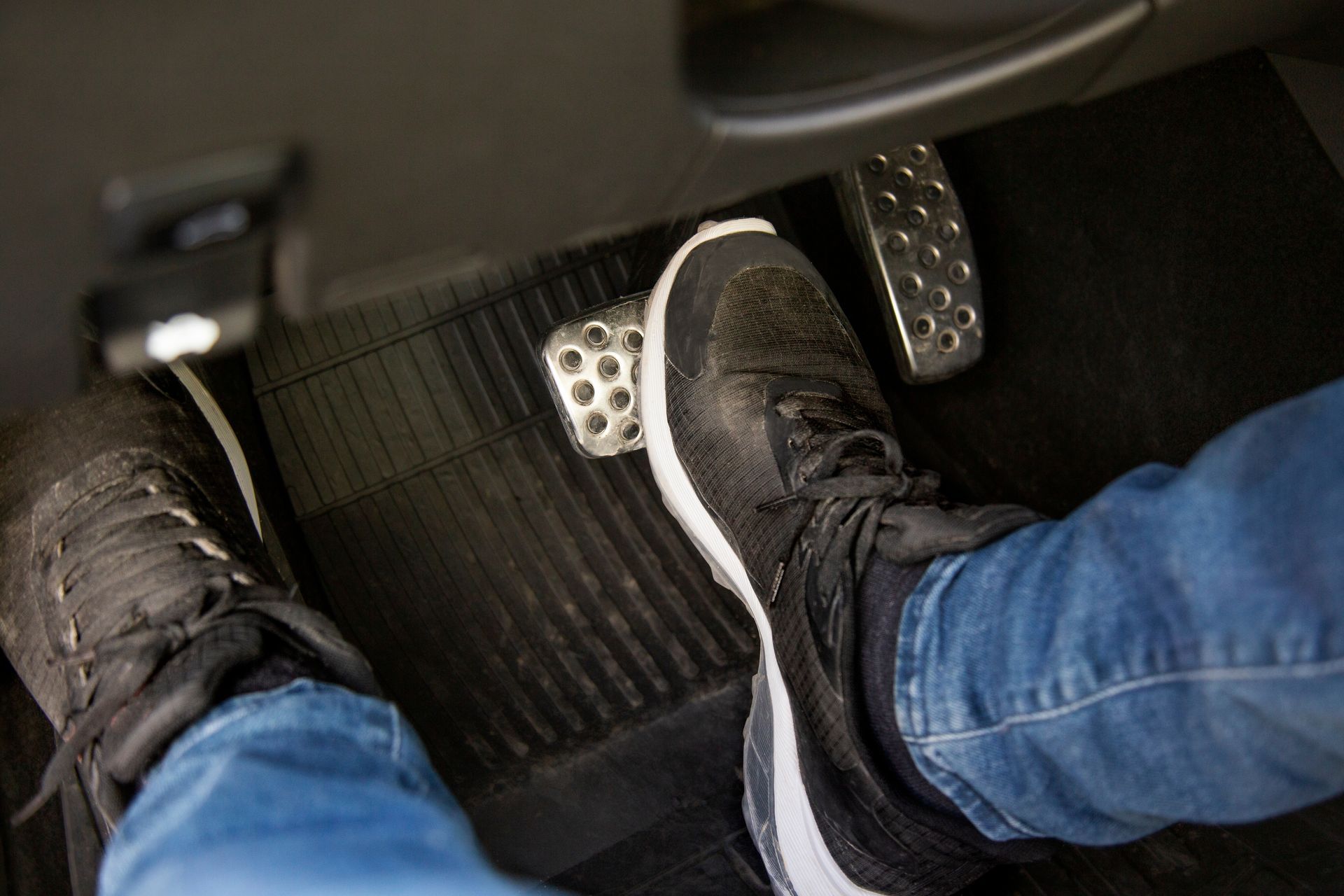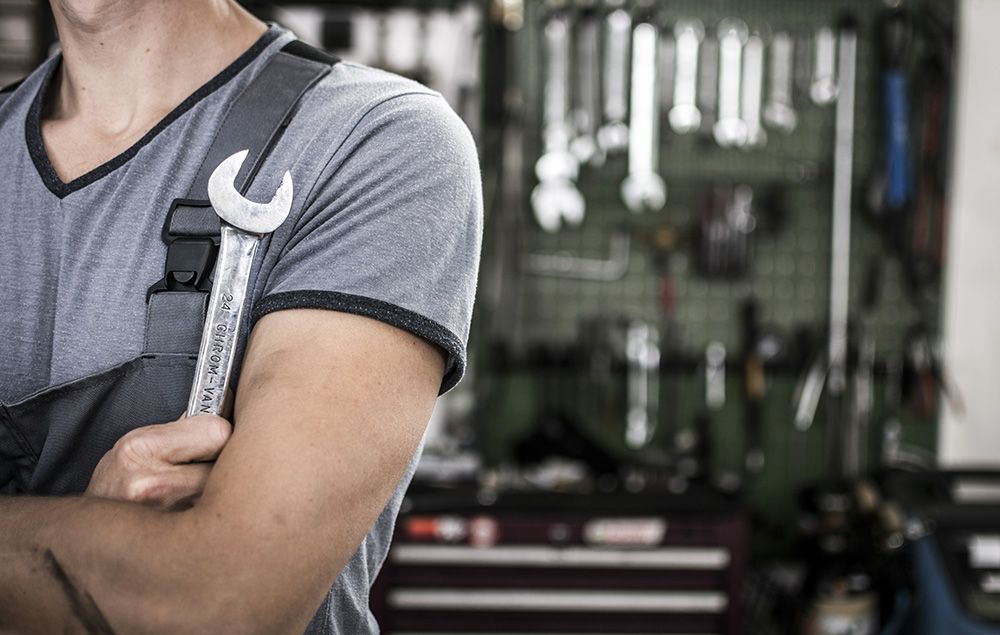Winter Tire Know-How: When and Why to Swap Your Tires
Winter weather in Heath, Ohio, can change at a moment’s notice. One day it’s a mild chill, and the next, you wake up to icy roads and a biting wind. The colder months present a unique set of challenges for drivers, especially when it comes to tire performance and safety. That’s why understanding the differences between winter tires and all-season tires—and knowing when to swap them—is crucial for confident driving. In this comprehensive guide, we’ll discuss everything you need to know about choosing the right tires, the science behind rubber performance in cold weather, and how Jeremiah’s Automotive can help keep you safe on the roads during the winter season.
Why Winter Tires Matter
Before diving into the details of when and why to swap, let’s explore why winter tires are essential in cold climates like Heath, Ohio. Unlike all-season tires, winter tires are specifically engineered with a rubber compound and tread pattern designed to stay flexible in low temperatures (generally below 45°F). This flexibility means they maintain better contact with the road, improving traction, braking, and overall handling on snow, ice, and slush.
What Makes Winter Tires Different?
- Rubber Compound: Winter tires use specialized compounds that remain soft and grippy when temperatures plummet, whereas the rubber in all-season tires tends to harden in the cold.
- Tread Design: Winter tires feature deeper tread depths and unique patterns (including “sipes,” or small slits in the tread) to channel away snow and ice, offering superior traction.
- Edge Biting Power: The sipes and tread blocks create more edges that help “bite” into snow, improving control and reducing stopping distance on slippery roads.
When Should You Swap to Winter Tires?
A common guideline is to switch to winter tires when the daily high consistently stays at or below 45°F. In Heath, Ohio, these conditions can start as early as late fall and extend through late winter. While it may seem inconvenient to have an extra set of tires, the advantages in traction, handling, and safety are well worth the investment.
Temperature Thresholds
- Above 45°F: All-season or summer tires function adequately.
- Below 45°F: Winter tires become crucial because the rubber compound in all-season tires begins to harden, losing grip.
Timing Considerations
- Early Swap: If you’re someone who drives frequently on early-morning commutes when temperatures are lowest, consider an earlier swap to winter tires.
- Late Swap: Some drivers wait until the first snowfall to switch, but that can be risky—ice and snow can arrive unexpectedly. It’s safer to rely on the temperature guideline than to wait for the first storm.
All-Season Tires vs. Winter Tires: Weighing the Pros and Cons
It’s essential to differentiate between all-season and winter tires to make an informed decision.
All-Season Tires
- Pros
- Versatility: Suitable for moderate climates and year-round use.
- Cost-Effective: Avoid buying and storing a second set of tires.
- Convenience: No need to swap tires twice a year in mild regions.
- Cons
- Compromised Winter Performance: Rubber hardens in colder temperatures, reducing traction.
- Longer Stopping Distances: On icy or snowy roads, stopping distances can significantly increase.
- Not Optimized for Extreme Cold: Traction and handling suffer once temperatures consistently drop below 45°F.
Winter Tires
- Pros
- Superior Cold-Weather Performance: Specialized rubber compounds remain flexible, providing better grip on ice and snow.
- Improved Braking: Reduced stopping distances in winter conditions.
- Enhanced Safety: Better handling, making driving less stressful in snowstorms or on black ice.
- Cons
- Initial Investment: Purchasing a second set of tires can be costly.
- Storage: Requires space for off-season tire storage, although some shops offer storage services.
- Performance in Mild Temperatures: Winter tires wear faster in warm conditions, so it’s best not to use them year-round.
How Cold Temperatures Affect Rubber Hardness
Rubber hardness is at the heart of tire performance in cold climates. As temperatures fall, the rubber in all-season or summer tires hardens, resulting in decreased grip and traction. Conversely, winter tires contain more natural rubber and silica-based compounds, allowing them to stay softer and more pliable under the same conditions.
The Science of Rubber in the Cold
- Glass Transition Temperature: This is the point at which a specific rubber compound transitions from being flexible to rigid. All-season tires have a higher glass transition temperature, meaning they become rigid at higher temperatures than winter tires.
- Traction Reduction: Hard rubber doesn’t conform to road irregularities or create as many biting edges, increasing your risk of sliding on ice or packed snow.
Practical Implications
If you’ve ever felt your vehicle slipping or struggling to maintain control at lower speeds on a cold, wet road, it’s likely due to the tire rubber’s reduced grip. Switching to winter tires resolves this issue by ensuring the rubber remains soft enough to grip the road effectively—even at sub-freezing temperatures.
The Importance of Proper Tread Depth
Regardless of whether you’re using all-season or winter tires, tread depth is a critical factor in maintaining safe traction. In snowy or icy conditions, deeper treads help channel snow, slush, and water away from the tire’s contact patch, preventing hydroplaning or skidding.
Recommended Tread Depth
- For Winter Tires: Aim for at least 6/32 of an inch to maintain optimal traction.
- For All-Season Tires: Many experts advise a minimum of 4/32 of an inch, though performance in winter conditions will still be limited compared to specialized winter tires.
Checking Tread Depth
A simple method is the “quarter test” (or the “penny test,” but a quarter offers a more conservative measure). Insert a quarter into your tire’s tread grooves. If part of Washington’s head is covered, you have at least 4/32 of an inch. For winter tires, use a more stringent test to ensure adequate tread remains.
Maintaining Proper Tire Pressure
Tire pressure can fluctuate with temperature changes—typically, you lose about one pound per square inch (PSI) for every 10°F drop in temperature. Driving on under-inflated tires can lead to poor fuel economy, uneven tread wear, and compromised handling—especially perilous on icy roads.
Seasonal Pressure Checks
- Regular Monitoring: Check tire pressure at least once a month during winter.
- Use a Reliable Gauge: Digital tire gauges offer more precise readings than older stick gauges.
- Follow Manufacturer Recommendations: Most vehicles have a recommended PSI listed on a sticker inside the driver’s door jamb or in the owner’s manual.
Tire Rotation Schedules for Even Wear
Rotating your tires is crucial for extending their life and ensuring consistent performance. This is especially important when you have a dedicated set of winter tires.
How Often to Rotate
- Every 5,000 to 7,500 Miles: This is the general rule of thumb, though your vehicle’s manual may specify a different interval.
- Pay Attention to Tread Patterns: Some tires are directional (designed to roll in one direction). Make sure to follow the recommended rotation pattern if that’s the case.
Benefits of Regular Rotation
- Prolonged Tire Life: Even wear means you won’t have to replace tires prematurely.
- Consistent Traction: Each tire gets to spend time at different corners of the car, balancing out tread wear.
- Cost Savings: Fewer tire replacements translate to financial savings in the long run.
Common Misconceptions About Winter Tires
Despite the proven advantages, some drivers remain hesitant to invest in winter tires. Let’s address a few misconceptions:
1. “All-Season Tires Are Enough for Ohio Winters.”
- While all-season tires can handle mild winter conditions, they’re not optimized for the colder temperatures and frequent snowfall typical of Heath, Ohio. Winter tires significantly reduce stopping distances on ice or snow.
2. “I Have AWD or 4WD, So I Don’t Need Winter Tires.”
- All-wheel drive helps with acceleration but not braking or cornering. Winter tires enhance grip in all aspects of driving—starting, stopping, and turning.
3. “Winter Tires Are Too Expensive.”
- While there is an upfront cost, you extend the life of your all-season tires by not using them year-round. The improved safety in inclement weather can be priceless in the long run.
4. “I Can Just Drive Carefully.”
- Defensive driving is vital, but winter tires give you a significant safety advantage—no matter how cautious you are, it’s hard to control the vehicle on slick roads without the proper tires.
How Jeremiah’s Automotive in Heath, Ohio, Can Help
At Jeremiah’s Automotive, we understand the ins and outs of winter driving in Heath, Ohio. Our goal is to ensure you have the right tires, properly maintained and fitted, for whatever winter throws your way.
Tire Inspections
- Tread Check: We’ll measure your tread depth to confirm you have enough traction for slippery roads.
- Sidewall Inspection: Our technicians look for cracks, bulges, or other damage that could lead to tire failure.
- Pressure Checks: We’ll ensure each tire is inflated to the manufacturer’s recommended PSI.
Sourcing the Right Tires
Not sure if winter tires are right for you? Our team can help you weigh the pros and cons based on your driving habits. We have access to a wide selection of tire brands and models, ensuring you find the perfect fit—whether you’re looking for a budget-friendly option, a high-performance winter tire, or something in between.
Professional Installation
- Mounting and Balancing: Proper mounting and balancing ensure that your tires wear evenly, reducing vibration and maximizing fuel efficiency.
- Wheel Alignment: If needed, we’ll align your vehicle’s suspension for optimal tire performance and longevity.
Rotation and Maintenance
- Tire Rotation Schedules: We keep track of your service history and remind you when it’s time to rotate, so you never miss an interval.
- Off-Season Storage Advice: Need tips on how to store your off-season tires? We can guide you through best practices to keep them in top shape.
Personalized Recommendations
Every driver’s situation is unique. Some may drive predominantly on highways, others on rural roads. Some vehicles carry heavy loads, while others are used mostly for short commutes. We’ll provide tailored advice so you make the most informed decision.
Additional Winter Driving Tips for Heath, Ohio
Swapping to winter tires is just one part of the equation. To stay safe on our local roads, consider these additional tips:
1. Keep Your Fuel Tank Half Full
- This prevents fuel lines from freezing and ensures you have extra running time for heat if you’re stuck in traffic or inclement weather.
2. Pack an Emergency Kit
- Include jumper cables, a flashlight, blankets, a small shovel, and a first-aid kit. Having these essentials can be a lifesaver in a winter roadside emergency.
3. Monitor Forecasts and Road Conditions
- Before heading out, especially for longer trips, check local weather reports. Snow can accumulate quickly, and ice can appear with little warning.
4. Adjust Your Driving Habits
- Leave extra space between vehicles, drive at slower speeds, and avoid abrupt steering or braking maneuvers.
5. Regular Vehicle Maintenance
- Beyond tires, make sure your battery, brakes, and fluids are all in good shape. A comprehensive winter maintenance check can spot potential issues before they become dangerous.
The True Cost of Winter Tires vs. The Cost of an Accident
Some drivers may balk at the price of a second set of tires. However, consider the potential cost of an accident. Even a minor fender bender can lead to repair bills, insurance deductibles, and potentially higher premiums down the line—not to mention the personal risk of injuries.
- Improved Safety: The enhanced traction, better handling, and shorter stopping distances winter tires provide can be the difference between a near miss and a collision.
- Long-Term Savings: Since you’re alternating between two sets of tires, both sets last longer overall. This can offset the initial investment in winter tires.
Frequently Asked Questions (FAQs)
1. Do I really need winter tires if I only drive in the city?
- Yes. Even short commutes can become treacherous when roads are icy. Winter tires offer added safety in stop-and-go city traffic.
2. Can I just buy two winter tires for the drive wheels?
- It’s strongly recommended to replace all four tires. Mixing winter tires with all-season or summer tires can lead to uneven traction and handling issues, potentially causing the vehicle to fishtail or understeer.
3. How long do winter tires last?
- With proper rotation and care, winter tires can last several seasons. The exact lifespan varies based on driving habits, mileage, and road conditions.
4. What about studded tires?
- Studded tires provide extra grip in extreme ice conditions. However, they are subject to specific regulations and may not be necessary for most Heath, Ohio, drivers. We can discuss if this is right for your particular needs.
5. Will winter tires increase my fuel consumption?
- Some winter tires have slightly higher rolling resistance, which can marginally affect fuel economy. However, the safety benefits often outweigh the minor increase in fuel usage.
Schedule Your Winter Tire Consultation at Jeremiah’s Automotive
Winter conditions don’t have to be intimidating when you’re equipped with the right tires. At Jeremiah’s Automotive in Heath, Ohio, our expert team is here to make the process as seamless as possible. We’ll help you select, install, and maintain winter tires that fit your driving style and budget—ensuring you stay safe no matter how icy or snowy the roads get.
Ready to Make the Swap?
- Contact Us:
- Website: Jeremiah’s Automotive
- Location: Heath, Ohio
- Hours of Operation:
- Monday to Friday: 8:00 AM – 5:00 PM
- Saturday & Sunday: Closed (Call us if you need special appointment times)
Final Thoughts
Winter driving in Heath, Ohio, doesn’t have to be daunting. By understanding the unique benefits of winter tires, monitoring tread depth and tire pressure, and following a consistent rotation schedule, you’ll be miles ahead of the game in terms of safety and vehicle performance. Remember, winter tires aren’t just for navigating deep snow—they’re essential for maintaining traction in any condition below 45°F, including ice, slush, and even cold, dry pavement.
At Jeremiah’s Automotive, we pride ourselves on helping our community navigate winter roads with confidence. Our comprehensive tire services, combined with our local expertise, make us the go-to choice for all your cold-weather car care needs. Don’t let the next cold snap catch you off guard—give us a call or stop by our Heath location to discuss the best tire strategy for your vehicle. Your safety is our top priority, and we look forward to helping you tackle the winter season with total peace of mind.
Stay safe, drive smart, and enjoy the unique beauty winter brings—knowing your tires are ready to handle whatever Mother Nature has in store.










